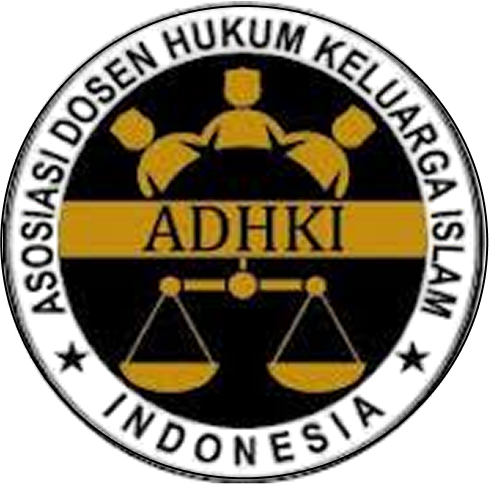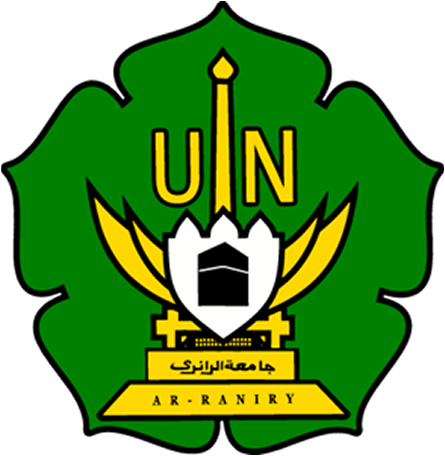The Study of Islamic Law About The Deceased Muslim and Its Cultural Symbols in Sumpur Kudus, West Sumatera, Indonsia
DOI:
https://doi.org/10.22373/sjhk.v5i1.9037Keywords:
Cultural symbol, custom, deceased, Islamic LawAbstract
Every living thing dies. The death of a person leaves an obligation for the living to perform some rituals for the deceased. The rituals have been regulated in such a way according to Islamic Sharia (law). Nevertheless, the practices could not be separated from the local traditions and customs. Their influences can be seen through various symbols used in the rituals for the deceased, as found in Sumpur Kudus, West Sumatra. The community has been using many symbols in carrying out the various rituals for the dead, such as kain unduang-unduang (a kind of white cloth stretched above the grave), parian (a bamboo tree that is used as a water container), payuang panji (an umbrella protecting the dead body along the way to the grave) and daun sicerek (a plant used for fragrance). The people stated that, in general, these symbols contain a deep affection of the living towards the deceased. The type of the study was field research with a qualitative approach. The data was gathered by observation, in-depth interviews, and documentation study. The analysis was done descriptively by data reduction, display, and verification (drawing conclusion). The result showed that the Sumpur Kudus community is a Muslim community that does not ignore Islamic law in the organization of their deceased. These symbols serve as tools to show affection of the living towards the deceased. The symbols do not only serve as symbols of affection, but they are also laden with the belief that contain transcendental values.References
Books and Articles
Adynata, “Studi Hadis-Hadis Mukhtalif tentang Mengumumkan Kematian (al-Na’y),” Jurnal Ushuluddin Vol. 23 No. 1, Juni 2015
Amir M.S. Adat Minangkabau: Pola dan Tujuan Hidup Orang Minang. Jakarta: Mutiara Sumber Widya, 2003.
Arifin, Muhammad & Khadijah Binti Mohd Khambali, “Islam dan Akulturasi Budaya Lokal di Aceh (Studi Terhadap Ritual Rah Ulei di Kuburan dalam Masyarakat Pidie Aceh),” Jurnal Ilmiah Islam Futura, Volume 15 No.2, Februari 2016
Anwar, Chairul. Hukum Adat Indonesia Meninjau Hukum Adat Minangkabau. Jakarta: Rineka Cipta, 1997.
Awaluddin, Noviyanty. (ed.) Kerajaan Minangkabau dalam Pusaran Badai Zaman. Padang: Pemerintah Daerah Provinsi Sumatera Barat Dinas Pendidikan dan Kebudayaan UPTD Museum Adityawarman, 2015.
Baehaqie, Imam. “Jenang Mancawarna: Sebuah Simbol Multikulturalisme Masyarakat Jawa.” Jurnal Komunitas (Research and Learning in Sociology and Anthropology). Vol. 6, No. 1, 2014.
Bukhâriy. al, Sahîh al-Bukhâriy. Beirût: Dâr al-Fikr, 2010.
Burhani, Ahmad Najib. “Revealing the Neglected Missions: Some Comments on The Javanese Elements of Muhammadiyah Reformism.” Studia Islamika. Vol. 12, No. 1, 2005.
Dienaputra, Reiza D. “Transformasi Visual Lambang-Lambang Partai Politik Islam (1955-2004).” ITB J.Vis Art and Des. Vol. 3, No. 1, 2009.
Ernawati, “Kontribusi Kebermaknaan Hidup Bagi Sikap Individu Terhadap Kematian,” Konseling Religi: Jurnal Bimbingan Konseling Islam, Vol. 5, No. 2, Desember 2014
Feener, R. Michael. “Tabut: Muharram Observances in the History of Bengkulu.” Studia Islamika. Vol. 6, No. 2, 1999.
Ghafar, Muhammad, Pryla Rochmahwati & Mukhibat, “The Harmony of Catholics and Muslims in the Commemorating the 1000th Day of Death Tradition: An Ethnographic Study in Bandungan Saradan Madiun,” Al-Tahrir, Vol. 18, No. 2 November 2018 : 265-281
Jamaluddin, “Tradisi Ziarah Kubur dalam Masyarakat Melayu Kuantan, Sosial Budaya: Media Komunikasi Ilmu-Ilmu Sosial dan Budaya,” Vol.11, No. 2 Juli-Desember 2014
Kahlaniy, Muhammad ibn Ismail, al. Subul al-Salâm. Vol. II, Beirût: Dâr Al-Fikr, 2001.
Kusuma, W, “Motivasi Masyarakat Palangka Raya Dalam Pelaksanaan Tradisi Menunggu Kuburan Dalam Tinjauan Hukum Islam,” Jurnal Studi Agama dan Masyarakat, Volume 11, Nomor 2, Desember 2015
Latifundia, Effie, “Situs Makam-Makam Kuna di Kabupaten Kuningan Bagian Timur: Kaitannya dengan Religi,” Kapata Arkeologi Volume 12 Nomor 1, Juli 2016: 59-70
Mahfud, Choirul. “The Role of Cheng Ho Mosque, The New Silk Road Indonesia-China Relations in Islamic Cultural Identity,” Journal of Indonesian Islam, Vol. 8, No. 1, 2014.
Morissan. Teori Komunikasi Individu Hingga Massa. Jakarta: Kencana, 2003.
Muchlis, Aulia Fikriarini. “Masjid: Bentuk Manifestasi Seni dan Kebudayaan.” El-Harakah. Vol. 11, No. 1, 2009.
Murodi. Komunikasi antar Budaya di Era Budaya Siberia. Jakarta: Kencana, 2012.
Murtiningsih, “Hakikat Kematian Menurut Tinjauan Tasawuf,” Intizar, Vol. 19, No. 2, 2013
Nasroen, M. Dasar Falsafah Adat Minangkabau. Jakarta: Pasaman, 1957.
Qudâmah, Ibnu. al-Mughniy.Volume III, Cairo: Dâr al-Hadîs, 2004.
Rais, Zaim. “The Minangkabau Traditional Response to the Modernist Movement.” Thesis. Canada: McGill University, 1994
Ramli, Yusri Mohamad. “Agama dalam Tentukur Antropologi Simbolik Clifford Geertz” (Religion an A Symbolic Anthropology of Clifford Geertz). International Journal of Islamic Thought. Vol. I, Bangi: 2012.
Ridwan, Kafrawi. (ed.). Ensiklopedi Islam.Vol. 5, Jakarta: Ichtiar Baru Van Hoeve, 1999.
Setiawan, Kodrat Eko Putro, “Nilai Religi Pada Puisi Ziaroh 1,” Indonesian Language Education and Literature, Vol. 3, No. 2, Juli 2018, 131 – 142
Sobur, Alex. Semiotika Komunikasi. Bandung: Remaja Rosdakarya, 2009.
Suharto. “Makna Religious Islam dalam Seni Ukir Macan Kumbang.” Ibda` Jurnal Kebudayaan Islam. Vol. 10, No. 2, 2012.
Suwito, Agus Sriyanto & Arif Hidayat, “Tradisi dan Ritual Kematian Wong Islam Jawa,” Ibda` Jurnal Kebudayaan Islam, Vol. 13, No. 2, Juli - Desember 2015
Syam, Nia Kurniati, Arifin Syatibi and Moh. Jibral Imperial Day. “Simbol-Simbol dalam Komunikasi Keluarga Beda Agama.” Mimbar. Vol. 31, No. 2, 2015.
Yunianti, Esterica. “Estetika Unsur-Unsur Arsitektur Bangunan Masjid Agung Surakarta.” Catharsis: Journal of Arts Education. Vol. 4, No. 1, 2015.
Zuhailiy, Wahbah. al, al-Fiqh al-Islâmiy wa Adillatuhu. Beirût: Dâr al-Fikr, 2011.
Interviews
Amran Datuak Nago Sati. Leader of the Clan, Sumpur Kudus: 2018.
Arjunaidi. Datuak Rajo Aceh Datuak Manti Godang Nagari, Sumpur Kudus: 2018.
Bayar. Nuclear Family of the Deceased, Sumpur Kudus: 2018.
Khairusani. Nuclear Family of the Deceased, Sumpur Kudus: 2018.
Lo, M. Akhir. Datuak Magek Sondi Adat, Sumpur Kudus: 2018
Nini. Bundo Kanduang (A Title Applied to Senior Women in Clan), Sumpur Kudus: 2018.
Nurhayati. Bundo Kanduang, Sumpur Kudus: 2018.
Petosori, Abdurrahman. Local Religious Leader, Sumpur Kudus: 2018.
Sarwin. Nuclear Family of the Deceased, Sumpur Kudus: 2018.
Suanggi, MR. Datuak Parpatiah Niniak/Rajo Nagari, Sumpur Kudus: 2018.
Sudirman, Tuangku Kuniang. Local Religious Leader, Sumpur Kudus: 2018.
Syafi’iy. Nuclear Family of the Deceased, Sumpur Kudus: 2018.
Downloads
Published
Issue
Section
License
Authors who publish in Samarah: Jurnal Hukum Keluarga dan Hukum Islam agree to the following terms:
- Authors retain copyright and grant the journal right of first publication with the work simultaneously licensed Attribution-ShareAlike 4.0 International (CC BY-SA 4.0) that allows others to share the work with an acknowledgment of the work's authorship and initial publication in this journal.
- Authors are able to enter into separate, additional contractual arrangements for the non-exclusive distribution of the journal's published version of the work (e.g., post it to an institutional repository or publish it in a book), with an acknowledgment of its initial publication in this journal.
- Authors are permitted and encouraged to post their work online (e.g., in institutional repositories or on their website) prior to and during the submission process, as it can lead to productive exchanges, as well as earlier and greater citation of published work. (See The Effect of Open Acces)









